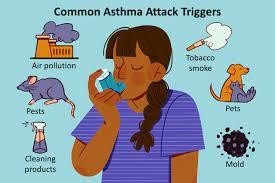The healthcare provider prescribed octreotide 150 mcg/day subcutaneously for a client with dumping syndrome. The medication is available in 0.2 mg/mL vials. How many mL should the practical nurse (PN) administer? (Enter numerical value only. If rounding is required, round to the nearest hundredth).
The Correct Answer is ["0.75"]
To calculate the amount of mL to administer, the PN should use the following formula:
mL = (mcg x 1 mg/1000 mcg) / (mg/mL)
Plugging in the given values, we get:
mL = (150 x 1/1000) / (0.2)
mL = 0.15 / 0.2
mL = 0.75
Therefore, the PN should administer 0.75 mL of octreotide subcutaneously.

Nursing Test Bank
Naxlex Comprehensive Predictor Exams
Related Questions
Correct Answer is ["A","D","E"]
Explanation
A) Correct- Continuous monitoring of oxygen saturation ensures the client's oxygen levels remain within an acceptable range.
B) Incorrect - Discussing aggressive respiratory treatment options is not warranted based on the provided information. The current treatment plan includes appropriate interventions.
C) Incorrect - Obtaining a sputum culture is important for identifying infections, but it's not an immediate action in the context of the client's current symptoms.
D) Correct- Promoting comfort can help reduce anxiety and potentially improve breathing.
E) Correct- Educating the client about potential triggers supports better self-management.
F) Incorrect - Considering positive pressure ventilation is not indicated at this stage. The client's symptoms are being managed with other interventions.
G) Incorrect - Weaning supplemental oxygen is not mentioned in the patient data or nurses' notes as something that's currently necessary.
H) Incorrect - Preparing for deep tracheal suctioning is not warranted based on the patient data and the current treatment plan.

Correct Answer is D
Explanation
A) Incorrect- This response might address the client's concern but doesn't directly address her dichotomous thinking or provide immediate therapeutic communication.
B) Incorrect- While showing happiness for the client's improvement is positive, this response does not address the client's behavior or engage with her dichotomous tendency.
C) Incorrect- This response acknowledges the client's liking but doesn't address the dichotomous thinking pattern or provide an effective therapeutic response.
D) Correct- answering this question encourages the client to express her concerns and perceptions, fostering communication. This approach acknowledges the client's feelings and provides an opportunity for her to discuss the issue, potentially leading to a productive conversation.
Whether you are a student looking to ace your exams or a practicing nurse seeking to enhance your expertise , our nursing education contents will empower you with the confidence and competence to make a difference in the lives of patients and become a respected leader in the healthcare field.
Visit Naxlex, invest in your future and unlock endless possibilities with our unparalleled nursing education contents today
Report Wrong Answer on the Current Question
Do you disagree with the answer? If yes, what is your expected answer? Explain.
Kindly be descriptive with the issue you are facing.
